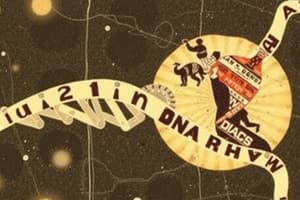Podcast
Questions and Answers
What is the role of DNA polymerase in DNA replication?
What is the role of DNA polymerase in DNA replication?
- Synthesizing RNA primers
- Forming phosphodiester bonds between two free nucleotides
- Unwinding the double helix of DNA
- Initiating DNA synthesis by adding nucleotides to the 3' end of a primer (correct)
What is the function of a primer in DNA replication?
What is the function of a primer in DNA replication?
- To act as a template for RNA synthesis
- To catalyze the formation of phosphodiester bonds between nucleotides
- To unwind the double helix of DNA
- To provide a starting point for DNA polymerase to initiate DNA synthesis (correct)
What is the direction of synthesis for the new DNA strand during DNA replication?
What is the direction of synthesis for the new DNA strand during DNA replication?
- 3' to 5'
- 5' to 3' (correct)
- 3' to 3'
- 5' to 5'
What enzyme is responsible for unwinding the double helix of DNA during replication?
What enzyme is responsible for unwinding the double helix of DNA during replication?
What is the term for the new DNA strand that is synthesized continuously in the 5' to 3' direction?
What is the term for the new DNA strand that is synthesized continuously in the 5' to 3' direction?
What is the role of RNA polymerase in DNA replication?
What is the role of RNA polymerase in DNA replication?
What is the function of primase in DNA replication?
What is the function of primase in DNA replication?
What is the term for the new DNA strand that is synthesized discontinuously in the 5' to 3' direction?
What is the term for the new DNA strand that is synthesized discontinuously in the 5' to 3' direction?
What is the primary objective of DNA replication?
What is the primary objective of DNA replication?
What are the components involved in DNA replication?
What are the components involved in DNA replication?
What is the role of DNA polymerase in DNA replication?
What is the role of DNA polymerase in DNA replication?
What distinguishes a leading strand from a lagging strand at a DNA replication fork?
What distinguishes a leading strand from a lagging strand at a DNA replication fork?
What is the function of helicase in DNA replication?
What is the function of helicase in DNA replication?
What is the significance of DNA replication in the continuity of life?
What is the significance of DNA replication in the continuity of life?
What is the enzyme responsible for synthesizing the new DNA strand?
What is the enzyme responsible for synthesizing the new DNA strand?
What forms the phosphodiester bonds between adjacent nucleotide units pairing to the template strand of DNA?
What forms the phosphodiester bonds between adjacent nucleotide units pairing to the template strand of DNA?
What is the role of helicase in DNA replication?
What is the role of helicase in DNA replication?
Which enzyme is responsible for sealing the nicks in the backbone of newly synthesized DNA strands?
Which enzyme is responsible for sealing the nicks in the backbone of newly synthesized DNA strands?
What serves as the template for the new DNA strand during replication?
What serves as the template for the new DNA strand during replication?
What is the function of DNA replication process?
What is the function of DNA replication process?
Flashcards are hidden until you start studying
Study Notes
DNA Replication Process Overview
- DNA is made up of 2 strands with 4 types of deoxyribonucleotides: A, C, G, and T, connected through phosphodiester bonds.
- Complementary pairing of bases occurs with A:T and C:G, forming the double helical structure of DNA.
- When new DNA strands are synthesized, the same A:T and C:G pairing principle is applied.
- The parental DNA strand serves as the template for the new DNA strand, carrying the specific sequence of bases from the parental genome.
- The sequence of the new DNA strand is identical to the other strand in the parental DNA.
- The new strand of DNA is synthesized by an enzyme called DNA polymerase, which sequentially synthesizes phosphodiester bonds to incorporate nucleotides.
- Helicase unwinds the parental DNA duplex to expose the sequence of bases, creating a "replication fork" where replication can occur.
- DNA polymerase forms phosphodiester bonds between adjacent nucleotide units pairing to the template strand of DNA.
- The process of DNA replication allows for the accurate duplication of genetic information.
Studying That Suits You
Use AI to generate personalized quizzes and flashcards to suit your learning preferences.




